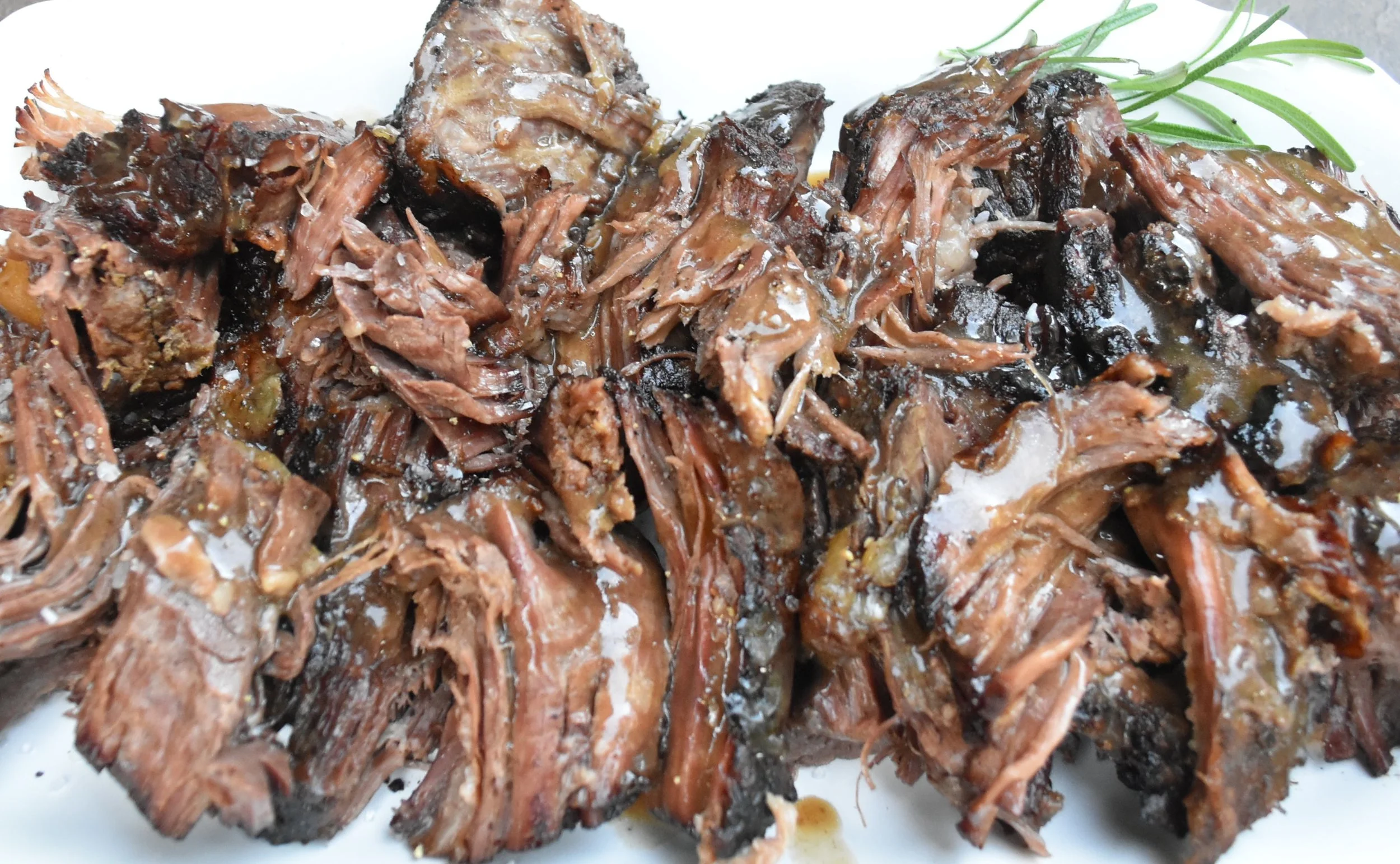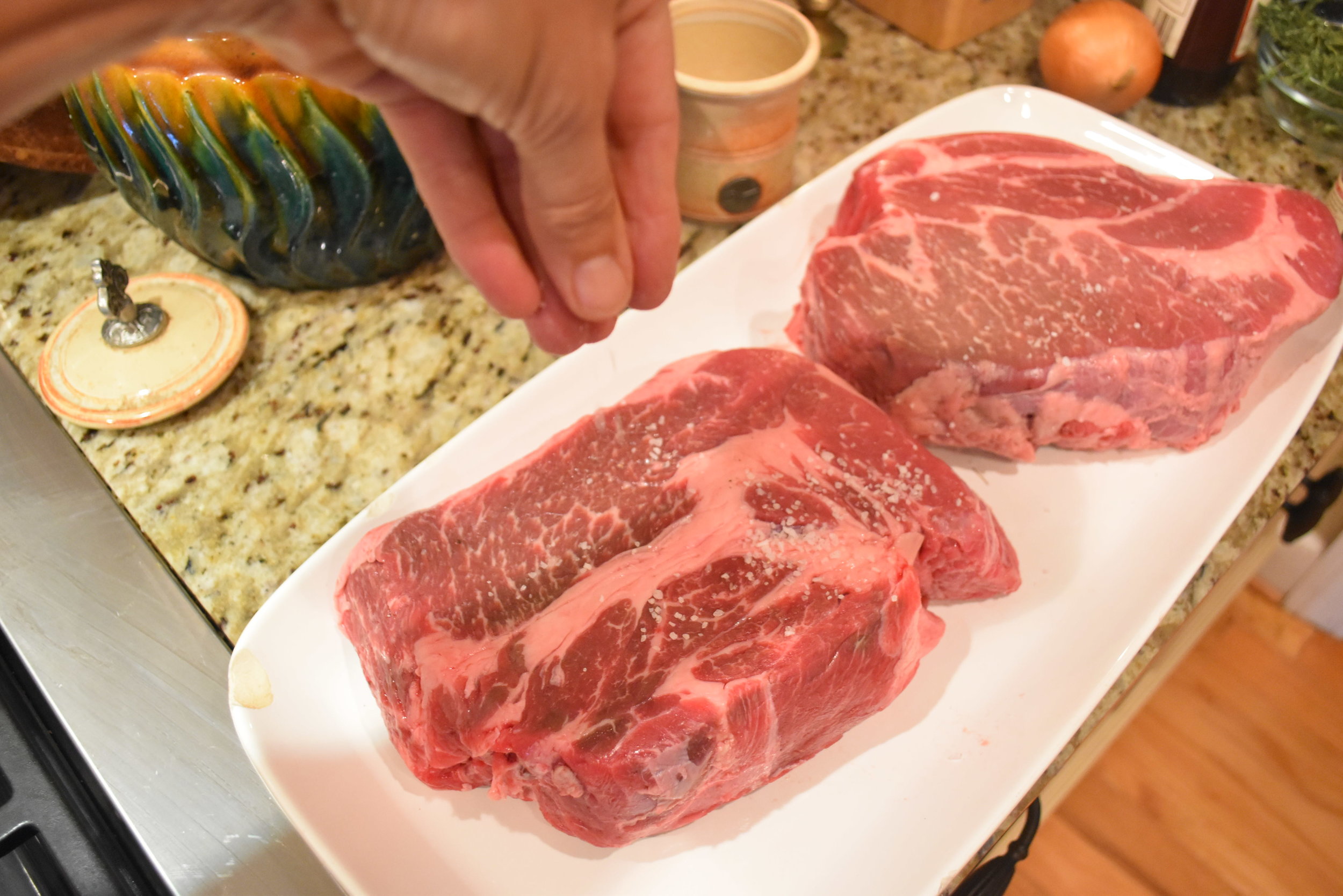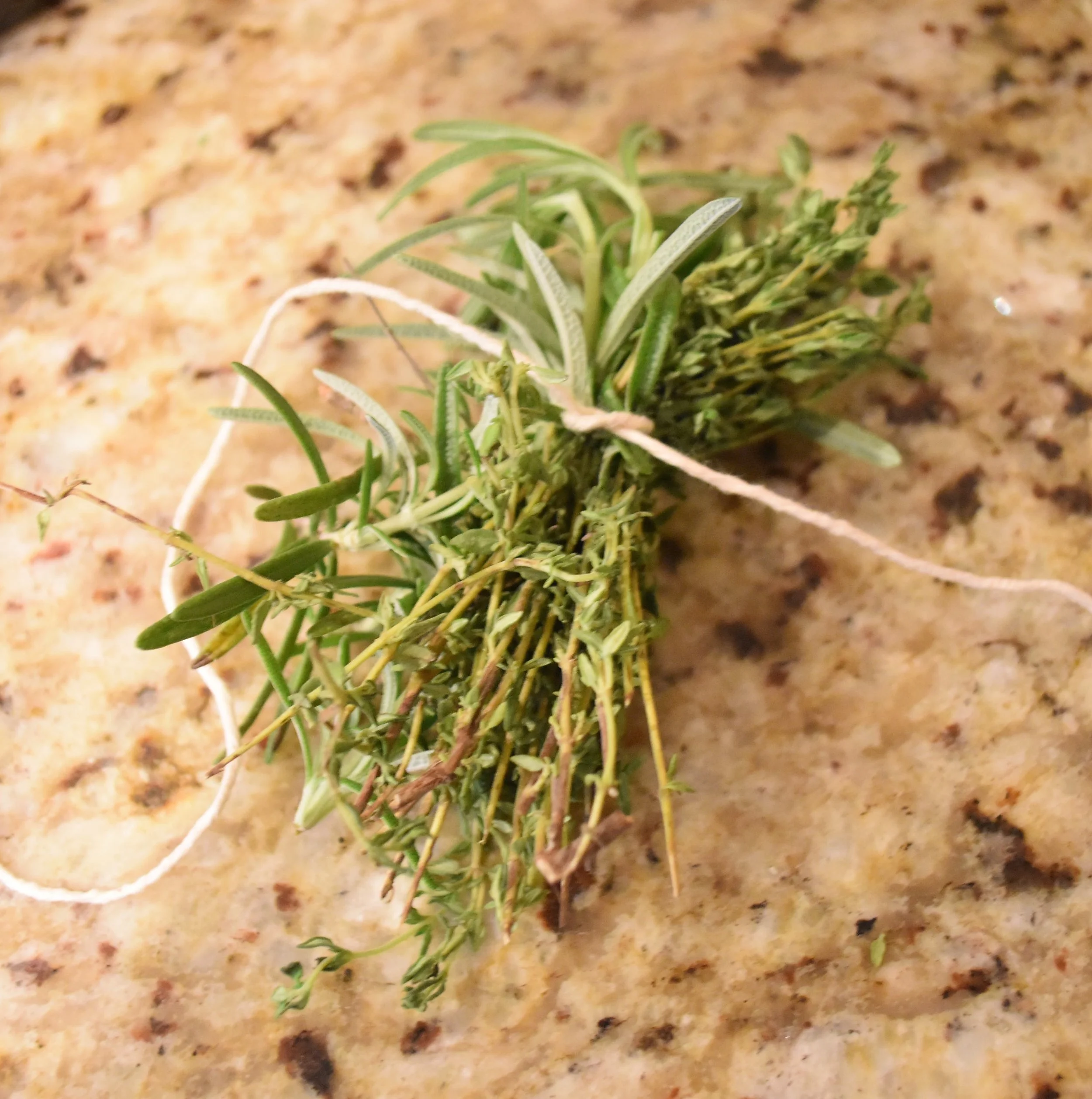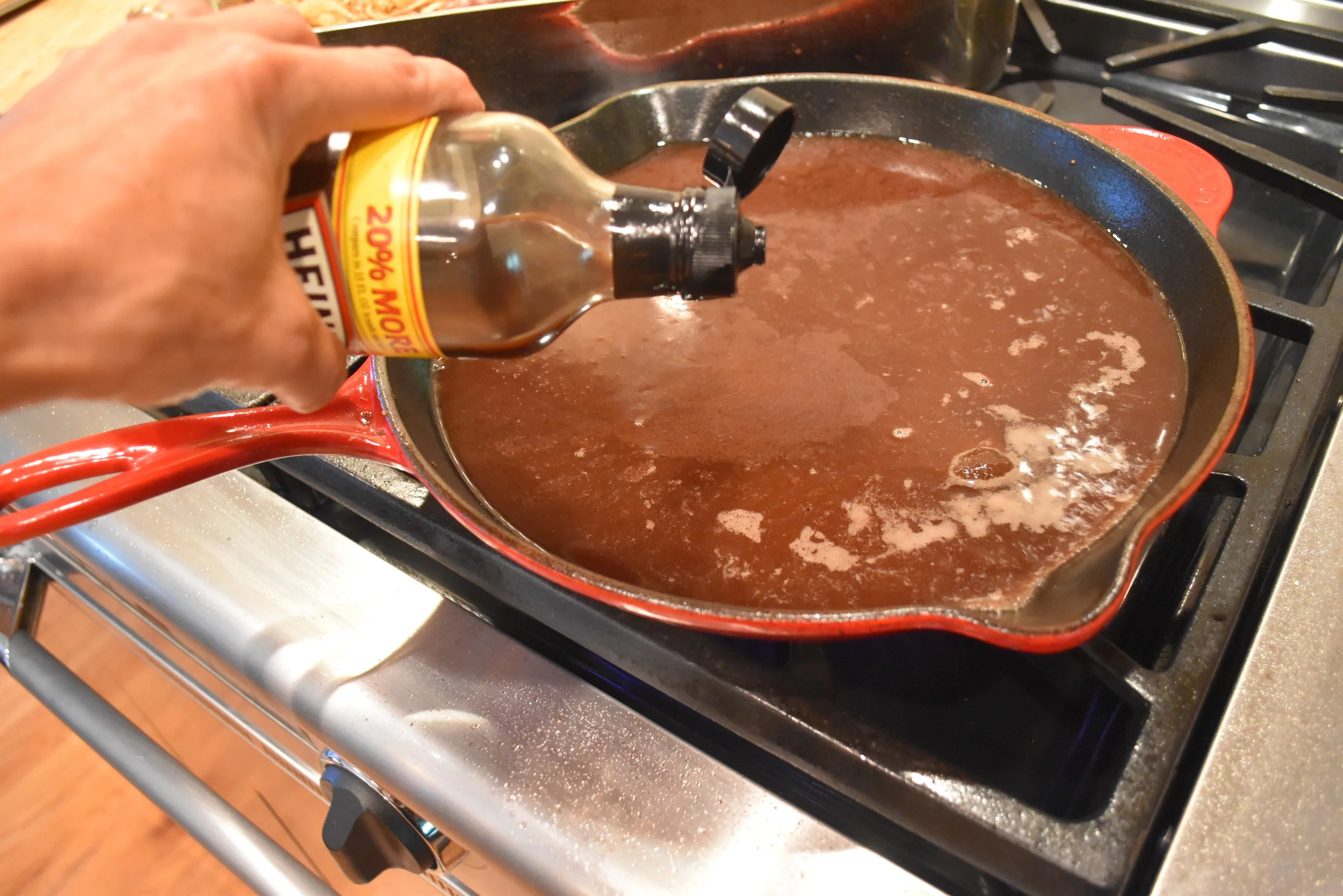It warms my heart to know that my kids use my blog as a recipe reference. That really is my end game when writing out recipes for my food. I believe that familial gastronomic treasures are part of the bond that holds a family together. We experience life through our senses. When we see and smell and taste a familiar dish, it jogs our memory of meals past, and the laughter and love we shared with those around the table. Recently, Lauren told me she now uses my blog for recipes more than she uses food network. Those are words of high praise indeed; however, I imagine that she will never use this recipe. A fact from our family archives is that Lauren has always hated pot roast. My positive spin on describing my young daughter's eating habits was that she had discriminating taste. Others might have called her persnickety; she had very fixed ideas about what she liked to eat and what was disgusting to her. Pot roast was in the disgusting column; she disliked the taste of the gravy and its soupy consistency. For the record, the adult Lauren is an adventurous diner and enjoys foods from many cultures.
Pot roast is one of those dishes where you invest a little time on the front end, and then let it bake low and slow unattended. I prefer using a chuck roast because the generous fat marbling yields a very tender and flavorful meat. I believe that pot roast, when properly prepared, should never need slicing, but rather, be pulled apart with two forks. In the following pictures, you will notice that I am doubling the recipe; I am taking dinner to my friend, Amy, who had knee surgery yesterday, so it's two roasts for two families. A 4-5 pound roast should feed 4-6, and with a bit of luck, some leftover for a beefy soup.
Pot Roast
4-5 lb. chuck roast
coarse salt and freshly ground pepper
1 medium onion, thinly sliced
4 sprigs fresh thyme
4 stalks fresh rosemary
1 large bay leaf
1/2 c. red wine
1 1/2 c. beef broth (homemade or purchased)
1/2 tsp. Kitchen Bouquet browning and seasoning sauce
2 tsp. Worchestershire Sauce
Pat the roast dry with paper towels. Sprinkle both sides generously with coarse sea salt and freshly ground pepper. Heat a skillet over high heat. Add a tablespoon of olive oil and sear each side of the roast for several minutes. Remove the meat from the skillet and place it in a roaster. Reduce the heat to medium; add a bit more olive oil or a spoonful of bacon grease. Add the sliced onions and sauté for 5 minutes, stirring frequently. Remove the onions and pile them on top of the roast. Pour 1/2 cup red wine into the pan to deglaze. Allow to cook for 2 minutes; add the beef broth and bring to a boil. My homemade beef stock was not beefy enough, so I added a spoon of Better Than Bouillon. Add the browning and seasoning sauce and the Worchestershire sauce. Whisk together while the mixture bubbles.
Preheat the oven to 280 degrees. Tie the fresh rosemary and thyme together with kitchen string. Add the herbs and the bay leaf in with the roast. Slowly pour the liquid around the seared meat. The liquid should level at about 1/3 to 1/2 way up the sides of the roast. Cover tightly with heavy foil or a lid and bake for 6 hours. Some will be done at 5 hours so start checking early. You will know that it is done when the meat falls apart under a wielded fork.
Drain off that precious liquid and strain it. You should have at least two cups of broth to make gravy with. Place in a large sauce pan. Skim off some of the fat. Make a flour and water slurry to thicken the gravy. Dump two heaping tablespoons of flour into a little jar or lidded container. Add cold water to cover the flour. Place the lid on the jar and shake the mixture together vigorously. Be sure that all the flour has dissolved in the water. If you have more than two cups of liquid to start with, adjust the amount of flour/water slurry accordingly. Place the saucepan over medium heat and very slowly, add the flour mixture, whisking all the while. Adding the flour slowly helps to avoid lumps. Cook for ten minutes, stirring frequently. This helps eliminate any raw flour taste. Taste the gravy and adjust the salt and pepper as needed.
Pull the roast apart into chunks and platter to serve. Top with a bit of gravy, saving plenty for the accompanying mashed potatoes.
A little taste test before I send this roast packing to my friend, Amy's house.
If you are lucky enough to have leftover roast and gravy, use them to make domestic goddess' beef vegetable soup; recipe found on this blog, under Recipes, and then go to Main Dishes.


























